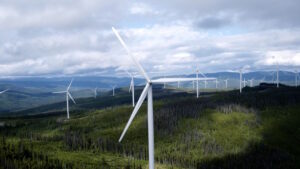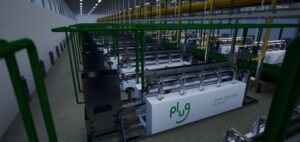Wind energy’s contribution to Australia’s electricity supply has doubled since 2014, after the sector added a record 837MW of new capacity to the grid over the course of 2019, and gears up to add gigawatts more.
In a statement marking Global Wind Day on Monday, the Clean Energy Council paid tribute to Australia’s wind energy sector, which in 2019 overtook hydro as Australia’s leading clean energy source, accounting for more than 35 per cent of Australia’s renewable energy generation and 8.5 per cent of total generation.
And we’re headed for an even bigger year in 2020. Australia currently has 28 large-scale wind farms under construction or financially committed with a total capacity of 5GW and 4200 peak construction jobs.
Among these projects, in Western Australia – which RenewEconomy editor Giles Parkinson last week noted is shaping up as the new hot-spot for wind in Australia, at least in terms of individual performance, – the 212MW Yandin wind farm is currently under construction by Alinta Energy.
In South Australia, a 320MW hybrid wind and solar project near Port Augusta is set to begin construction this month, with a first stage comprising 210MW of wind capacity.
In New South Wales the 200MW Silverton wind farm near Broken Hill finally reached full production last month, nearly two years behind schedule after a series of delays and grid constraints that severely curbed its output.
And in Victoria, Goldwind Australia’s 530MW Stockyard Hill wind farm this month started sending power to the grid, after the first of what will be a total of 149 turbines was connected to the Victorian transmission network.
That project, once complete, will become Australia’s largest wind farm, taking the mantle from the 453MW Coopers Gap project in Queensland, which was also just recently completed.
“Wind energy presents an enormous opportunity for Australia as we transition from carbon-emitting fossil fuels,” said CEC chief Kane Thornton in comments on Monday.
“Over the last decade, we’ve seen South Australia transform itself by dumping coal and truly embracing wind as part of its energy mix and set the standard in terms of what can be achieved. There’s undoubtedly more that can be done with the right transmission line infrastructure investment.
“Now, we see Western Australia take up the challenge and harness its clean energy resources with wind.”
Thornton also paid tribute to the direct and indirect financial benefits wind farms were delivering to regional and rural Australia, contributing to local communities and diversifying traditional agricultural economies.
By the end of 2021, the CEC estimates that $5 million a year will flow into regional and rural communities through wind farm established Community Enhancement Funds, alone.
“The growth in wind farm development comes at a critical time for our regional and rural economies, as they’ve been battered by long-term drought and over the last year, fire,” Thornton said.
“Not only are there enormous benefits for our environment as we lower our carbon emissions, but renewable energy can solidify communities, improve energy reliability and help save money on electricity.”
RenewEconomy and its sister sites One Step Off The Grid and The Driven will continue to publish throughout the Covid-19 crisis, posting good news about technology and project development, and holding government, regulators and business to account. But as the conference market evaporates, and some advertisers pull in their budgets, readers can help by making a voluntary donation here to help ensure we can continue to offer the service free of charge and to as wide an audience as possible. Thank you for your support.










